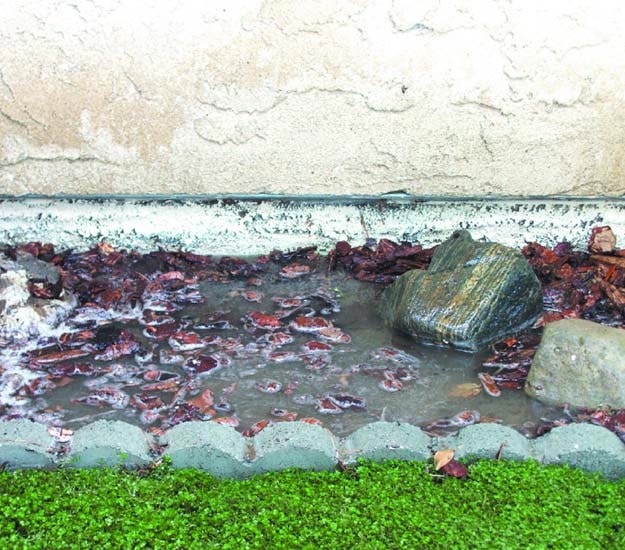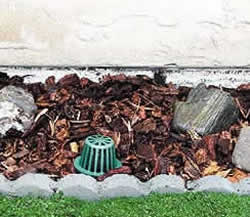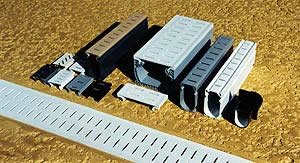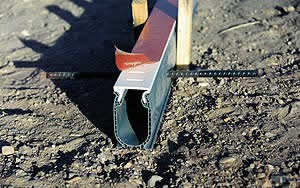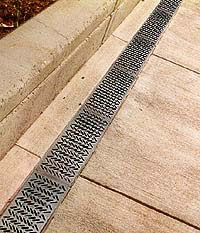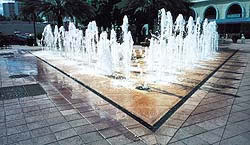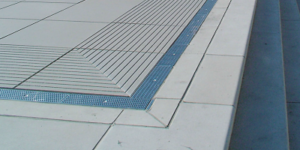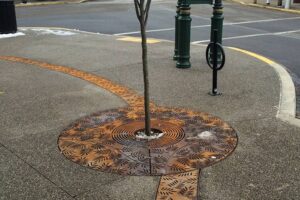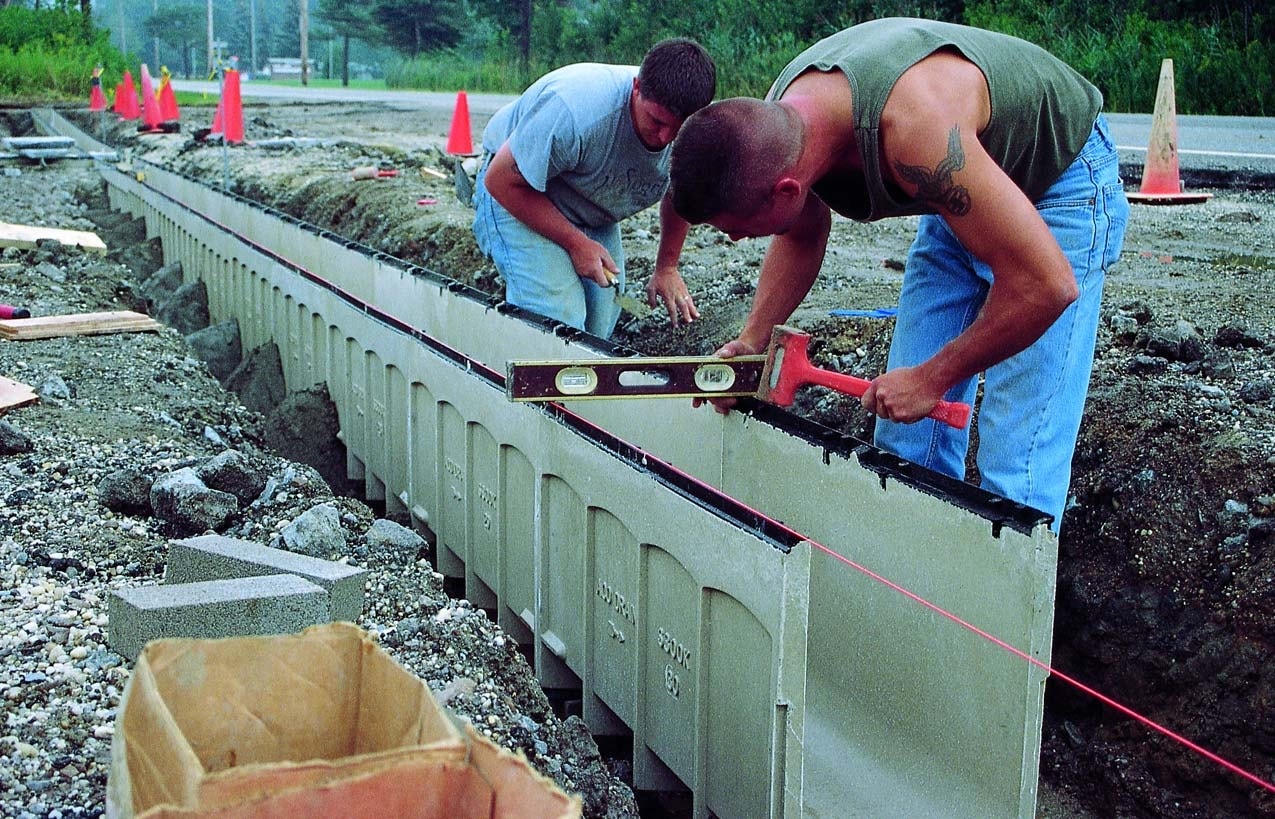 If rain, swimming pool water, landscape runoff or other liquids pose hazards to your decorative concrete work, consider adding a drainage system to your project. Water and liquids naturally want to run to low spots. Drains, when properly selected and installed, quickly capture and transfer liquids away from the site, reducing standing water on the decorative surface. Not only can this enhance the longevity of your work, it makes the surface safer for pedestrians and traffic by reducing slip hazard.
If rain, swimming pool water, landscape runoff or other liquids pose hazards to your decorative concrete work, consider adding a drainage system to your project. Water and liquids naturally want to run to low spots. Drains, when properly selected and installed, quickly capture and transfer liquids away from the site, reducing standing water on the decorative surface. Not only can this enhance the longevity of your work, it makes the surface safer for pedestrians and traffic by reducing slip hazard.
There are many kinds of drain systems. However, the systems typically used by concrete contractors fall into two categories: trench or channel drains and catch basin or point drains.
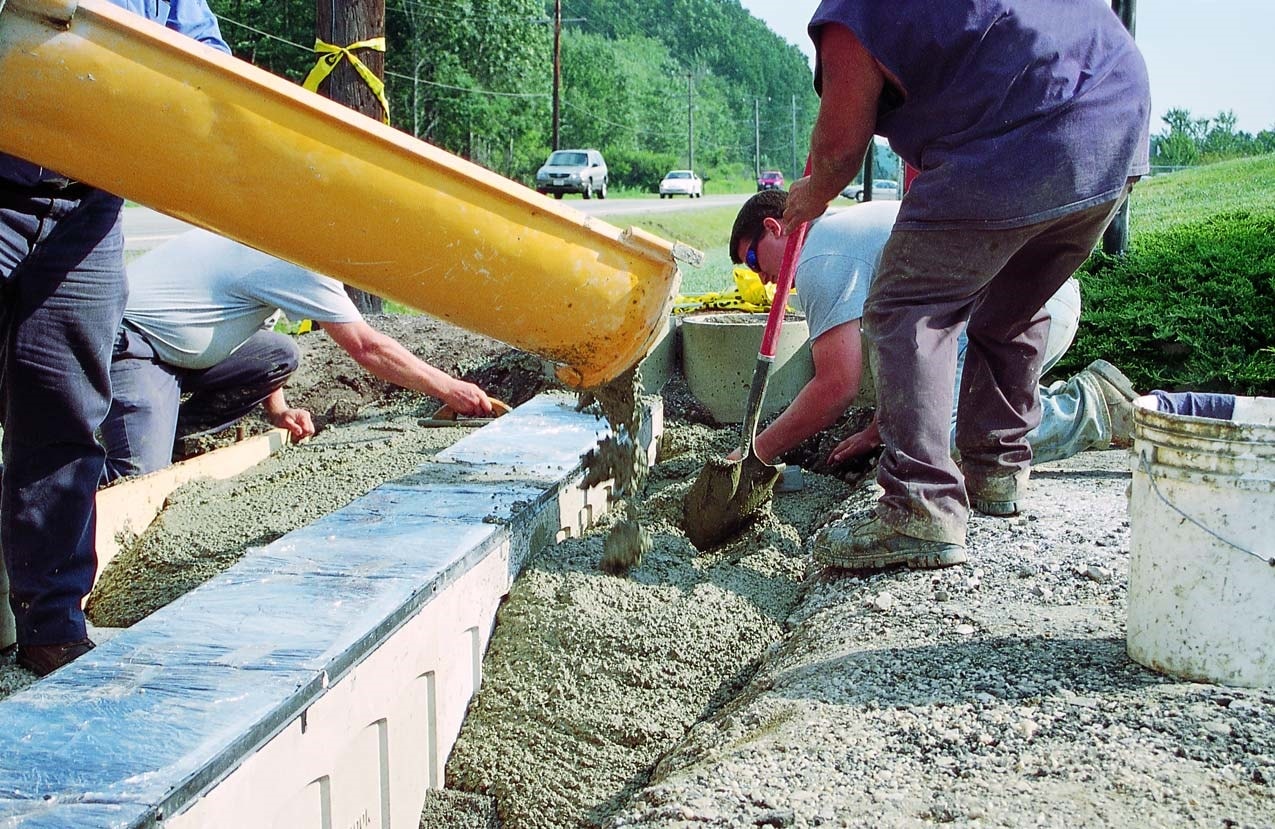 Trench and channel drains
Trench and channel drains
“The most efficient way to catch sheet water is trench drains,” reports Tom Simon, national sales manager for Advanced Building Technologies Inc. in Troutman, N.C.
While the terms channel and trench drains are often used interchangeably, there is a difference.
Jeff Tyler, drainage and landscape marketing manager for National Diversified Sales Inc. in Woodland Hills, Calif., explains that channel drains are generally intended for residential or commercial use. They are extruded or molded out of plastic in 10- or 20-foot lengths. Though U-shaped with a grate, channel drains usually have a flat bottom, with no built-in slope or pitch. Design-build contractors, landscape contractors and deck contractors often use channel drains, which can frequently be found at the “big box” stores or at wholesale distributors.
Trench drains are generally used in commercial and industrial applications, Tyler explains. “They have a pre-designed slope or pitch built in to each piece. … They can be pre-made or cast in concrete on site.” The slope is usually a 0.7 percent to 2 percent grade. Trench drains, Tyler observes, typically have a rounded bottom to prevent debris from accumulating. Pre-manufactured trench drains are usually made of heavy-gauge plastic or polymer-modified concrete.
Lesley Pickering, marketing coordinator for ACO Polymer Products Inc. in Chardon, Ohio, cautions contractors that not all systems are compatible with all paving materials, though most are compatible with concrete. “The only problem they may have is where the trench material does not have a similar coefficient of expansion as the surrounding concrete or paving material,” she says. If the trench system material expands and contracts at a different rate than the surrounding paving material, there may be buckling or distortion.
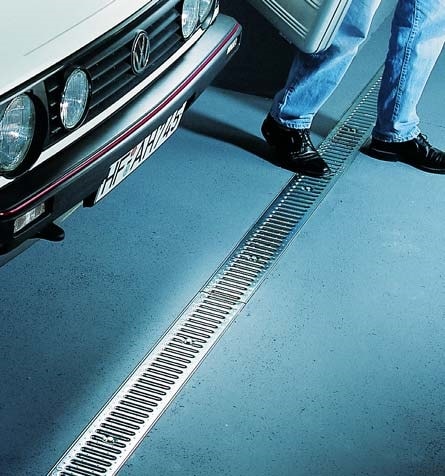 Trench and channel drains work well in many situations. In residential settings you frequently find them between a sloping driveway and a garage entrance or along a straight retaining wall. In commercial and industrial settings they can be used to control storm runoff and chemical spills. The size of the drain system and the material the drain is made of — plastic, polymer concrete or some other material — depends entirely on the liquid and quantity you will be draining away from the site.
Trench and channel drains work well in many situations. In residential settings you frequently find them between a sloping driveway and a garage entrance or along a straight retaining wall. In commercial and industrial settings they can be used to control storm runoff and chemical spills. The size of the drain system and the material the drain is made of — plastic, polymer concrete or some other material — depends entirely on the liquid and quantity you will be draining away from the site.
Pre-cast or cast in place?
Should you use a pre-formed trench drain or cast it yourself?
Pickering points out that casting trench drains in place is very labor intensive and the resulting drain is of inconsistent quality. While product costs are low, labor and materials to create the forms can be high. On the other hand, she says, pre-cast trench drains are fairly simple and quick to install. And while the product costs are higher, the savings on pipe and labor often compensate.
Simon, also, points to the labor side of the equation. When laying a straight run with minimal turns, he says, “Four good carpenters will do well to build 50 to 100 feet in a day of trench drain. Contractors using modular trench drains could do 300 to 500 feet.”
He also observes that building by hand also results in a larger drain — by necessity — and slower flow. “If you build by hand, you’ll typically have at least 12 inches to facilitate form construction and removal,” Simon says. By comparison, he explains, a 4-inch pre-made polymer-concrete trench will give you the same hydraulics as a 12-inch poured concrete drain because it has a smoother interior. Poured concrete has a rougher surface, creating turbulence, which impedes and limits the hydraulics.
“When a contractor forgets to include drainage in the estimate is when one might end up doing it by hand; figuring they can handle the labor loss more than paying for the pre-formed products,” Simon says. “Or they think they can do it for less.”
Catch basins and point drains
If you have sufficient contour to the site or you can’t use a channel or trench drain, a catch basin or point drain may be the drainage system you need to use. Both of these systems require the concrete to slope to a central point for water collection, and plumbing is necessary under the concrete to drain water away from the site.
A point or area drain is set up much like a shower drain, with a small grate in the center. A single drain pipe leads water away, though the pipe may have several point drains located along its run.
A catch basin is a catchment receptacle with outlet ports set into the ground at the base of a basin. Pipes are attached to the outlet ports to channel water away from the site.
These are not the easiest drains to install. Pickering points out they require “complex four-way grades to work effectively.” Also, while product costs are usually low, “The additional cost of extensive pipes and excavation costs are often ‘forgotten,’” she adds.
Choosing a grate
Many factors are involved in choosing a grate — not just cost.
Load rating is a critical factor, says Tyler. “The grating needs to support the application.”
When evaluating load rating, Tyler advises that you consider the weight and size of vehicles, the speed of approach of the vehicles, and if the vehicles have pneumatic or hard tires. A grate you integrate with a walkway or driveway may require only a “light traffic rating.” On the other hand, the hard tires of forklifts are tough abuse for a grate, requiring a heavier “H-20 load rating.”
If you’re not sure about a grate’s load rating, talk to the manufacturer about your project’s specifics. Tyler explains, “I would rather have the call before the job, rather than after an improperly installed grate breaks.”
Durability is also important. Pickering asks, “Are the trench and grate materials resistant to the liquids/chemicals being drained?” Grates are made from a wide range of materials, including plastic, brass, cast iron, ductile iron and stainless steel. The load rating also may be dependent on the durability of the grate material.
Aesthetics usually come in to play after load and durability factors are considered. If cost is an issue initially, remember that grates can often be changed out later and upgraded to a more desired material, finish or design. Other user issues may involve safety — including Americans with Disabilities Act requirements — and security issues, such as how easy is it to remove the grate.
Remember the key elements
Engineers and architects usually do the homework up front and specify the necessary drainage recommendations for commercial and industrial projects. Design-build and residential contractors may not have that benefit. But making smart decisions about drainage systems is not hard if you keep in mind a few key factors.
In choosing a drain system for a particular application, first determine the hydraulic performance required — this will tell you the size drain you need. Then look at the site itself. Space limitations and sloping issues will drive the selection of a drain type. As Bud Stegmeier, co-owner of Stegmeier Corp. in Henderson, Nev., points out, if you use multiple point drains, you’ll have to deal with the ups and downs of multiple bowls, whereas “with a trench drain you’ll still have the slope [and] it won’t be level, but it will be flat.”
In selecting a grate, be sure to consider loading factors, durability issues and user requirements.
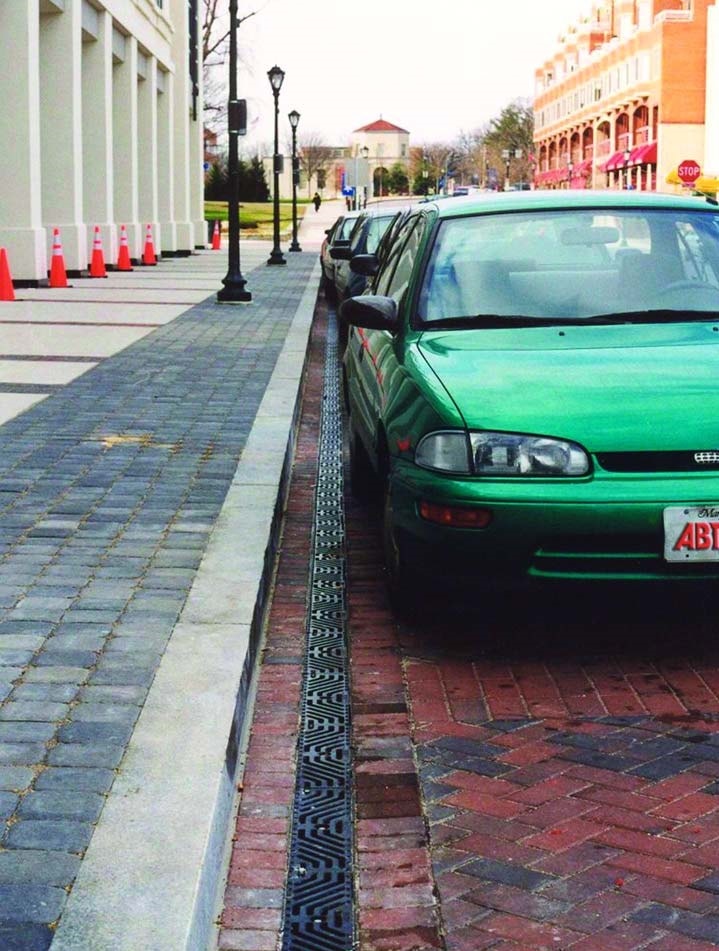 Finally, don’t forget that drainage systems need maintenance and cleaning. With trench drains, you can access the entire system through the grate and debris can be easily flushed to the catch basin for removal or shoveled clean, reports Pickering. Maintenance on catch basin or point drain systems is trickier because pipes are buried; blockages can be difficult to locate and remove.
Finally, don’t forget that drainage systems need maintenance and cleaning. With trench drains, you can access the entire system through the grate and debris can be easily flushed to the catch basin for removal or shoveled clean, reports Pickering. Maintenance on catch basin or point drain systems is trickier because pipes are buried; blockages can be difficult to locate and remove.
When choosing among the many products available in the marketplace, Steve Born, operations manager of MultiDrain Systems Inc. of Erlanger, Ky., recommends that contractors look at ease of installation, labor costs, the system cost and the time it takes to install. Also helpful is making sure the manufacturer has the technical staff available to answer any questions you may have — before you get started and as your project progresses.
|
For more information on drainage systems, ACO Polymer Products Inc. |



